|
Executive Editor

Join Date: Aug 2006
Posts: 29,160
|
|
 Mobius 2006 Thailand: Day One
Mobius 2006 Thailand: Day One
Mobius kicked off with a round-table of introductions � there are many new faces at this Mobius, mostly from Taiwan, Singapore, Japan, and Hong Kong. New opinions in the room are a breath of fresh air, so I was looking forward to what would be offered up by people in the room. In the interest of full disclosure, Microsoft paid my way to come to Thailand: airfare, hotel, and meals during the Mobius conference. My wife Ashley came along with me, and I paid for her ticket and our hotel stay prior to the start of Mobius. The first night we were given a red RoadWired Pod, which happens to be one of the few RoadWired cases I didn't already have.
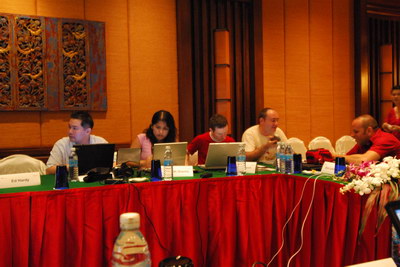
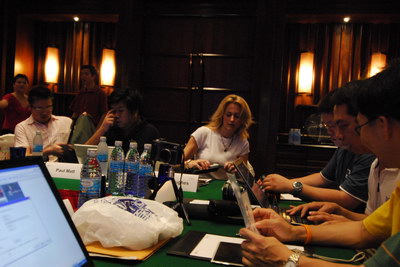
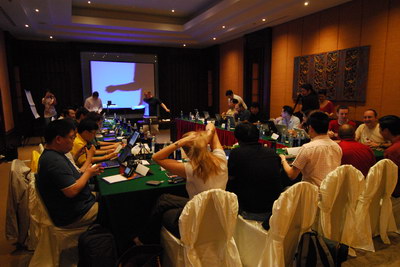
Session two was a presentation from Derek Snyder that covered the current state of Windows Mobile 5 devices, including showing some new devices such as the HTC Excaliber. HTC built in a predictive text engine that is apparently more advanced than what Motorola offers with the Q. Derek then demonstrated a Windows Mobile Palm Treo running the MSFP update, which he used to look up an address in the Microsoft corporate global address list (GAL). I suspect minimal use for most people in this room with me, but great for corporate users. The new Windows Live Messenger client Derek used looks quite interesting � I don't use IM much on my device, so I hadn't checked this out yet. The multiple tab for popping back and forth between conversations is very cool, and useful for heavy chatters. There's a Today screen plug-in allows you to quickly access your Windows Live settings, including your Messenger status and name. Yahoo! Go is another new app that I haven't used � not being a user of anything Yahoo! related other than the Mobius mailing list � but it seems to function like a "lite" Exchange server. The client synchronizes your calendar, contacts, tasks, and email with Yahoo services. For heavy Yahoo users, this looks like a killer client worth checking out. They even have some Web-based games, and photo sync to connect your Yahoo photo album with your device. You can configure it to automatically upload photos taken with your Windows Mobile device � slick.
Derek next shows a traffic monitoring tool called Inrix. It supports the most densely populated cities in the United States. It has a predictive model where you can jump forward in 15 minute increments and it will show you how traffic density goes up or down based on historical data.

What really got my attention was the demonstration of the Xbox Live client running on a Smartphone � I've read about it of course, but never seen it demonstrated in person. It looks excellent, and while fairly simple in functionality, I can definitely see a use for it. In essence, it's a simple way for you to add friends to your Xbox Live account using your Windows Mobile device. I for one would use this, because my current method of adding people to my Xbox Live account is to print out a list of gamer tags and walk up to my Xbox to add them. Very lame. Sadly, there's still no release date for this application which is really frustrating � Microsoft has been talking about this application for months, yet it seems no closer to release. This is largely why companies like Google constantly beat Microsoft to market with their products.
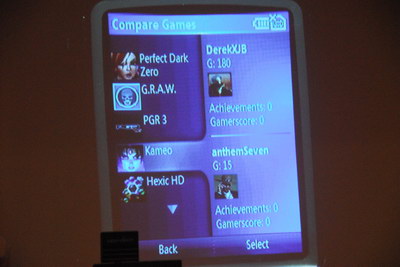
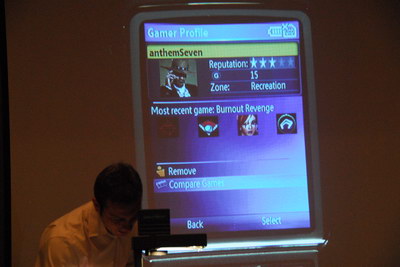
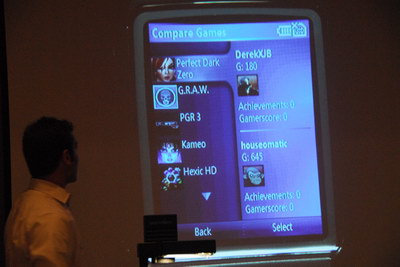

To get to 80% of the smartphone market, you have to design for over 100 phones. Developers take note: Microsoft has released Patterns & Practices: Mobile Client Software Factory. It's a Visual Studio software tool (a set of DLLs to be precise) that allows developers to quickly and easily develop applications that can scale and adapt to multiple screen resolutions (both square and rectangular screens). Not being a developer, I can't fully appreciate this release, but it looks like a great step forward.
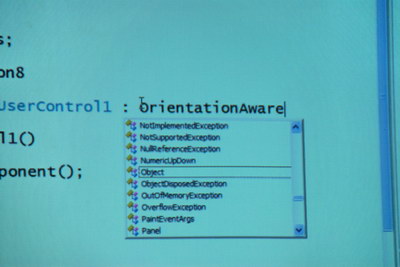
Derek then brought out a Windows Mobile Palm and walked through some of the features that Palm has added. The unified Inbox brings together SMS and email messages, and the SMS threading feature looks very useful for heavy SMS users. It basically turns SMS into an IM chat where you can see the history of the SMS with that person. You can also easily re-send SMS texts with a couple of clicks, which is useful if the person didn't get the original message. Improvements in the SMS client are a nice way of making text messaging easier to use. We had a short discussion around operators that are removing MSN Messenger clients, and whether or not that was a significant issue. Most people in the room felt it wasn't, because anyone that realizes MSN Messenger is missing are savvy enough to install their own client. The issue I raised was the next logical step from the carriers: port and service blocking,
Communicator Mobile is Microsoft's corporate IM client, and it looks extremely powerful. If someone isn't in your IM list, you can use a lookup tool that searches the Exchange global address list, and start a chat with anyone listed. You can use the client to set Out of Office messages, forward your work number to another phone, one-touch VOIP calling (which rings the local office phone).
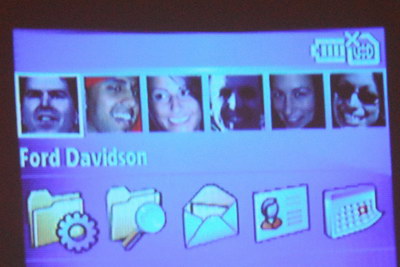
There are new Windows Mobile 5.0 Powertoys coming out: the first is a Today-screen plugin called Photo Browser that allows you to pan through all the photos in your My Pictures folder directly from the today screen. The controls are simple � d-pad left and right to move from photo to photo, and d-pad action on the photo will open it in the default application. Nice and simple, useful if you use your device to show off photos of your kids, pets, or frog collection (that's for you Howard!). The next is called Speed Dial Today, which patterns itself after what Palm did with their Windows Mobile Treo.
Speed Dial Today will be coming out "very soon" for the Smartphone only (sorry Pocket PC users, Derek said they didn't want to step on Palm's toes), and the Photo Browser will be for both Pocket PC and Smartphone. There's no confirmed release date for Photo Browser, Derek said they're still in discussions with the developer. There's been a sad lack of Powertoys in the Windows Mobile world for several years now, so I hope these are the first of many new Powertoys coming from the Windows Mobile team.
When Derek mentioned Orb and Windows Media Center, my ears perked up. He demoed an app called Lobster, which allows you to connect to your Windows XP machine and access all your media from your machine. It's a competitor to Orb, so it's a server-type app that installs on your PC and monitors your media. Lobster then gives you a local Windows Mobile app to access your music and photos (that's it for now) with the speed of a local client. That put a smile on my face, since I recently wrote an article about Orb and my primary complaint was that it was very slow being strictly browser-based. Lobster looks cool � the demo didn't work however, so I was unable to get much of an impression of it. The basic idea looks great, especially if they can programmatically tap into the Media Center TV guide and allow remote browsing and tagging of TV shows to record.
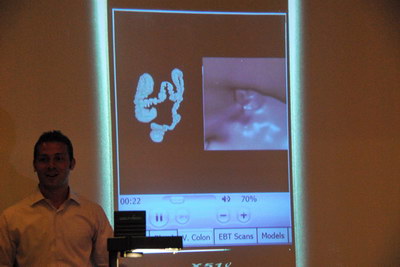
Derek then showed a line-of-business application called Mobile Med Visualization where he showed a medical application that uses the Intel 2700G 3D accelerator on a Dell Axim X51v to do a real-time rendering of a 3D heart scan from a patient. He also showed a video of a colonoscopy that brought many amused chuckles in the room.
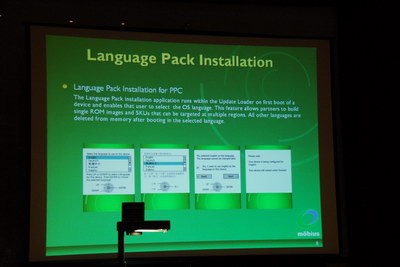
The 3G feature pack includes some minor updates; it detects networks and displays the appropriate icon to alert the user to the speeds they should expect. There's a new language pack that will allow OEMs to ship a device and allow the user to select their language at first boot. In markets such as Hong Kong where Dopod is selling devices where some users want English and some want Chinese � this feature addresses that problem. It's up to the OEM to decide when/how they support this of course, because it requires more ROM space.
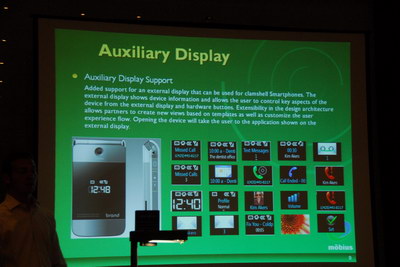
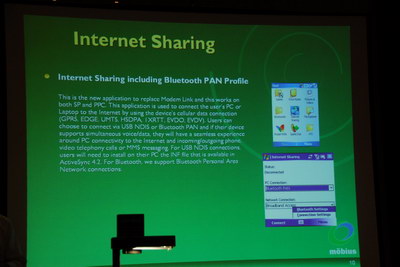
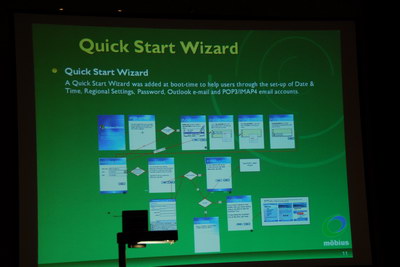
There's enhanced auxiliary display support, and new Internet sharing over Bluetooth. A Quick Start wizard is now included, which steps the user through basic device settings such as setting the time (which is surprisingly difficult on a Smartphone). There's a new account set up wizard in Inbox Mobile, with improved auto-detection of email settings (I've been told Microsoft has contracted a third party to manage and update this process, as opposed to the old version which was just an XML file up on a Microsoft server that was updated manually). WPA2 is now supported, and there's a new WiFi connection wizard on the Smartphone. The Pocket PC has improved one-handed support, you can now send vCard over SMS, and you can now save SMS to the SIM card (an important feature for hard-core SMS users). Video will now always go full screen (1.5x and 2x) in Windows Media Player 10 Mobile, and there's smart-dial support for your media: meaning you can start typing the name of the artist you want to listen to, and it will do a real-time filter through all the music. Voice Command has been improved to work with Bluetooth headsets, and they hinted at a new version of Voice Command being released to the public, no doubt based on these improvements.
We were then given something very cool: a Dopod 838 Pro, better known as the HTC Hermes. I always look forward to Mobius because it often means I get my hands on a device that I'm otherwise unable to acquire (unless I want to dish out some major dollars). The Dopod 838 Pro looks like a very slick device � it's a bit smaller than my Jasjar, though it looks just as thick (or perhaps even thicker). Will it replace my Qtek 8500 Smartphone as my daily device? We'll see.
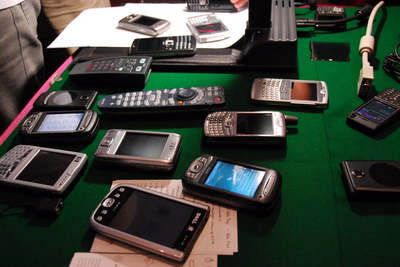
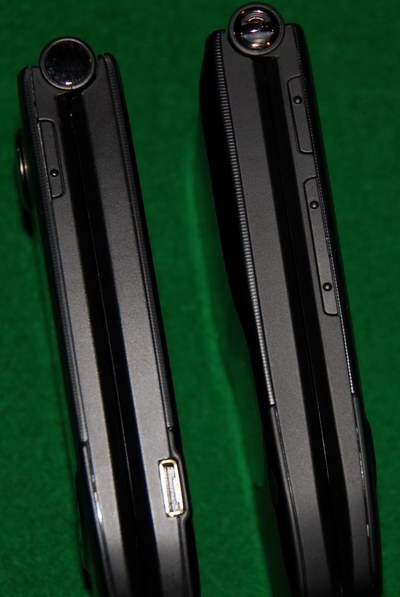
The size difference between the Qtek 8500 and the Cingular 3125 � the battery is 750 mAH vs. 1100 mAH, and 64 MB RAM vs. 128 MB RAM.
After a short break, Nick White took over and gave a presentation on Windows Vista. Having been a part of the Featured Communities group, I've sat through a lot of Windows Vista presentations, so much of what Nick talked about wasn't new. Vista does have some excellent features though � I was particularly pleased to hear that the Vista search indexer would index Outlook data without Outlook needing to be open. That's a big improvement over the current Windows Desktop Search that I'm using on my PC today. The Aero Glass features are cool, though Intel will have to release a graphics chipset that doesn't suck for us laptop owners to ever use Aero Glass properly. Especially on thin and light laptops that are geared towards maximizing battery life, ATI and NVIDIA chipsets capable of running Aero Glass are scarce. Nick showed us a demonstration of Windows Presentation Foundation using a real-world example from the New York Times. It was essentially an offline magazine that reminded me of Zinio � very smooth presentation, great user interaction, that partially replicates the experience of reading a newspaper. Windows Sideshow was presented, which is a great concept, but until Microsoft ships Vista no OEM can ship a laptop that has this feature.
The device story for Windows Vista is something most people in the room cared about. Nick started off by demonstrating how Vista works with an iRiver Clix. The initial sync bombed out � the perils of beta software it seems.
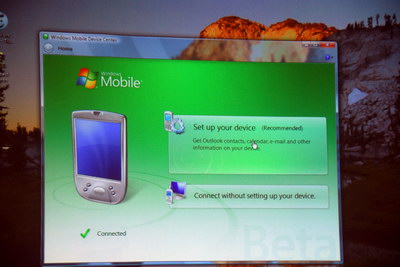
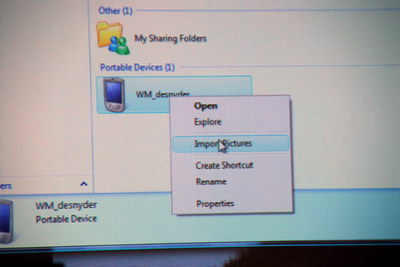
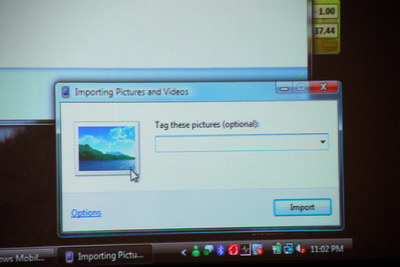
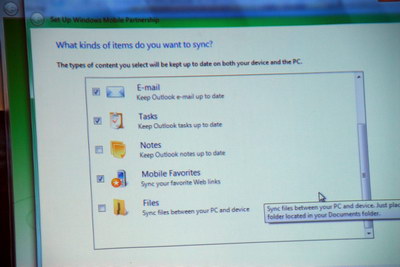
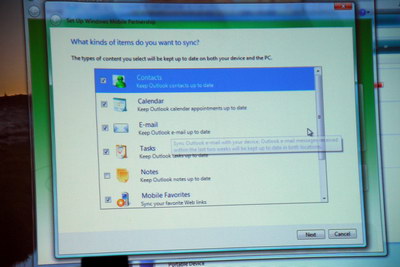
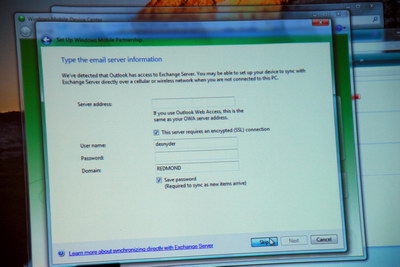
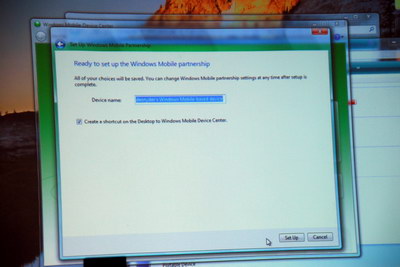
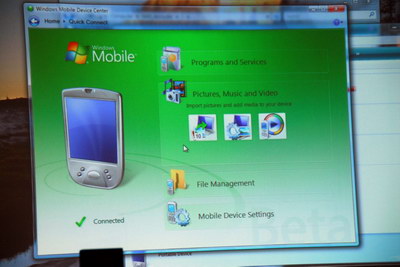
Derek Synder went into a demo of the Windows Mobile Device Center � I really like what I'm seeing with this client, though I'm unclear on how much ActiveSync code is behind the scenes. I dearly hope the answer is none, and this is the "fresh start" we've been begging for since 2000. ActiveSync will not install on Windows Vista, and in fact the Windows Mobile Device Center will not be installed in Vista by default � it will be downloaded as a Windows Update when the machine detects a Windows Mobile device. That seems particularly non-user friendly, but the reason for it seems related to antitrust issues and concerns over including too much in Vista. Windows Mobile 2003, 2003 SE, and Windows Mobile 5 devices will be supported by the Windows Mobile Device Center. I'm unsure of how upset this will make some people � if someone is using a an original Pocket PC or Pocket PC 2002 device, are they the kind of person that will immediately want to upgrade to Windows Vista? Or will they continue to use Windows XP and an older device?

Dion Wiggins, Vice President and Research Director for Gartner, gave us a presentation on the future of Mobility (after a lengthy and impressive introduction of his background and skills � he programs fluently in 32 languages). Some of the points I pulled from his presentation:
[*] By 2020, the average home will have more than 20 times the amount of wireless data interactions between devices than it has today. There are plenty of opportunities for amazing advances, but there are many issues around privacy that will need to be addressed.
[*] People are spending money on IT, but in many cases in the wrong areas.
[*] There are various aspects of how device design works: visceral (wow factor, looks good), behavioural (effective, easy and pleasant to use), and the values of the device and how they reflect the value of the user.
[*] By 2010, 50% of all handsets shipping will be able to communicate with devices near them. This will allow for tremendous improvements in functionality, but it also presents many challenges.
[*] He mentioned an interesting stat: when you're interrupted from your primary task, it takes an average of eight minutes to return to your previous level of productivity.
[*] He talked about some of the hardware breakthroughs: an MIT group developed an internal-combustion engine on a chip, screens that use no power to display content that isn't changed (electronic ink), and multi-modal user interaction (such as the "nouse", a concept that allows you to control devices with your face through looks and blinking). Speech recognition in a noisy environment actually working? He says he's seen demonstrations from Microsoft Research Asia that are very compelling.
[*] What are mobile operators going to do about all this? They haven't worked out how to monetize data properly. The threats they deal with include wireless VOIP, SMS shifting to IP messaging (email, IM), fear of becoming a low-margin bit pipe, consolidation, saturated markets, slow uptake of 3G services, pricing pressures on voice and SMS revenue, loss of customer control/loyalty/brand value, lack of differentiation, and more sophisticated corporate customers. The opportunities for carriers include things such as convergence and bundling, new offerings, note business areas (media, entertainment), multiple handset ownership, large installed base, and new types of subscribers (notebooks with embedded 3G).
[*] Internet technologies are coming more and more into mobile devices: Flash Lite, HTML, Java, WiFi, 3G, RSS, IM. Few companies have really figured it out though, there are less than 50 truly impressive applications on the market today that bring together all the right pieces.
[*] He talked about the way devices will have richer profile support. You'll be able to activate a software or hardware switch, and your phone will function as an MP3 player in a more dedicated fashion. One device, multiple profiles � though of course battery life becomes a huge issue.
[*] He had a slide on keyboards that was quite interesting. Gartner has ranked various devices and their keyboards, and how they've all evolved toward the general Blackberry/Treo design.
[*] There are key tradeoffs with form factors. Weight is hugely important � there's a "1 KG wasteland" where, if a device is too heavy, it simply doesn't go with the user everywhere they go. Screen size is important � can you see an entire email easily? Is it one handed or two handed? Each has vast differences in speed of input and data manipulation. Does the device render all of the files formats that you need?
[*] Displays through 2008: inkjet technology that can print displays on uneven surfaces, zero power displays that only update once every 40 seconds, round screens, holographic screens, no backlight screens, and much less expensive srceens.
[*] Bringing smartphones (any mobile device) into the IT fold is a huge challenge. Compared to notebooks, smartphones need more user training, use proprietary connectors, somewhat immature development cycles, have less remote management capabilities, sparse application selection, and require more IT support.
[*] RIM Mobile strengths: Blackberry is focused highly on email, they have strong operator alliances, intense user loyalty, enterprise focused, and they have a cash hoard. Weaknesses: proprietary OS
[*] Symbian strengths: wireless optimization, operator alliances, strong OEM partners, dominate share of prosumer Smartphones. Weaknesses: enterprise focus, consumer-oriented J2ME, weak branding, and weak profiles.
[*] Windows Mobile strengths: development tools/developer loyalty, business applications, enterprise PDA market share, well-defined service profiles (reference designs), and many hardware OEM partners. Weaknesses: slow end-user innovation, long testing and release cycles, penetration within major OEMs is lacking, ownership of OS updates is frustrating. Threats to Windows Mobile include anti-Microsoft sentiment, internal bureaucracy, few identifying messages to consumer and prosumers, Java community, and Linux community.
[*] Connectivity and Network Performance are going to continue to improve. By 2010 we'll have "4G" but it will be an assortment of different standards. He's expecting to see 1000 Mbps wireless by 2010.
[*] Networking costs are going to continue to reduce
[*] Storage is going to increase tremendously � micro drives with 20 GB of storage are around the corner. He was quite bullish on improvements in battery life and the decline of single-use devices such as the iPod. I disagreed with him, saying that the battery life is still very far away from being sufficient to allow people to completely drop dedicated audio and video players and to use their phones instead.
[*] Trying the human in to the Internet: GPS location, height and time, distance
[*] Wireless will be the essential glue to enable the vision of ambient intelligence
[*] Getting it right means it's all about the PEOPLE: interface, ruggedness, connectivity, storage, performance, operating system, applications, power, add-ons, support, and security. All of them have to meet the needs of users in order to succeed.

The next presentation was from Sebastian Schmidt from Spb Software House. Spb has a long history of Windows Mobile development � they've won many awards, including Handango's Developer of the Year twice. Spb develops consumer applications, but they also create tools for developers, and OEM/ODM development (T-Mobile, Intel Siemens, HP, Microsoft, and others). They also do custom development � Yahoo! Go was created by Spb, which brought many surprised looks from the Mobius group. They have 60 full-time employees, and only focus on Windows Mobile development. Sebastian delved into the way Spb operates internally � they have an intranet system that allows them to track bugs, deal with customers, and keep track of all aspects of the business. They officially support 11 languages currently, and are working on simplified Chinese and Japanese next. They had a release chart that showed the history of their applications, and by the end of 2006 there will be at least three new applications released. Sebastian asked us not to write about these applications, so I won't, but I will say that they all look quite interesting and innovative in the Windows Mobile space.
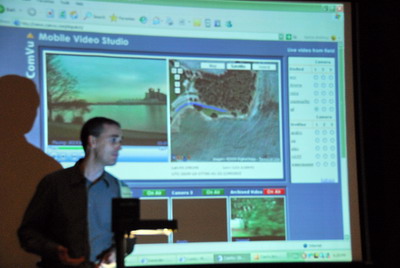
The last presentation of the day was from PocketCaster, and I was extremely impressed. The concept is actually so powerful it's hard to easily wrap your brain around, because the possibilities are vast. In essence, PocketCaster is a Windows Mobile client that does real-time encoding and uploading of video to the Web. That's something I've simply never seen before � in the demonstration he passed around a Jasjar, with all Mobius attendees looking into the camera. Within 10 seconds or so the video recorded on the Jasjar was being played back on the Web page with an embedded Windows Media Player client. He gave a compelling example of reporting in the field, streaming live from a mobile device, and having the camera confiscated by someone else � it wouldn't matter, the video is already up on the server. Using a Windows Mobile device with UMTS, his tests have resulted in video at 65 KB/s and 25 frames per second. The service scales with better quality equipment � there's a Windows XP desktop client that can be used with Web-cams or DV cams and WiFi where quality full-screen video is realistic. The optic quality of Windows Mobile devices is limited today, but as that improves so too will the quality of the video.
The service is aimed primarily at carriers - they want to sell their software so the T-Mobile and Vodaphones of the world will license it and offer it as a service to their clients, giving the end-user a way to broadcast videos up to their MySpace page, YouTube, personal blogs, etc. After seeing a demonstration of how it worked with Google Maps - they encode latitude and longitude information in every single video frame - my jaw was on the floor. It was amazing to see a video on the left of someone driving inside a car, and on the right a live satellite map showing a real-time movement of the vehicle along the road. Very impressive stuff.
And that's a wrap for day one of Mobius � tonight we're all off for dinner and a Muay Thai fight at a local arena. I hope you enjoyed the detailed coverage, and be sure to check back tomorrow for the final day of Mobius. Tomorrow will be less presentation-oriented, and more discussion-oriented, so there will be less coverage from me.
Jason Dunn owns and operates Thoughts Media Inc., a company dedicated to creating the best in online communities. He enjoys mobile devices, digital media content creation/editing, and pretty much all technology. He lives in Calgary, Alberta, Canada with his lovely wife, and his sometimes obedient dog. He's loving Thailand!
|






































 Threaded Mode
Threaded Mode